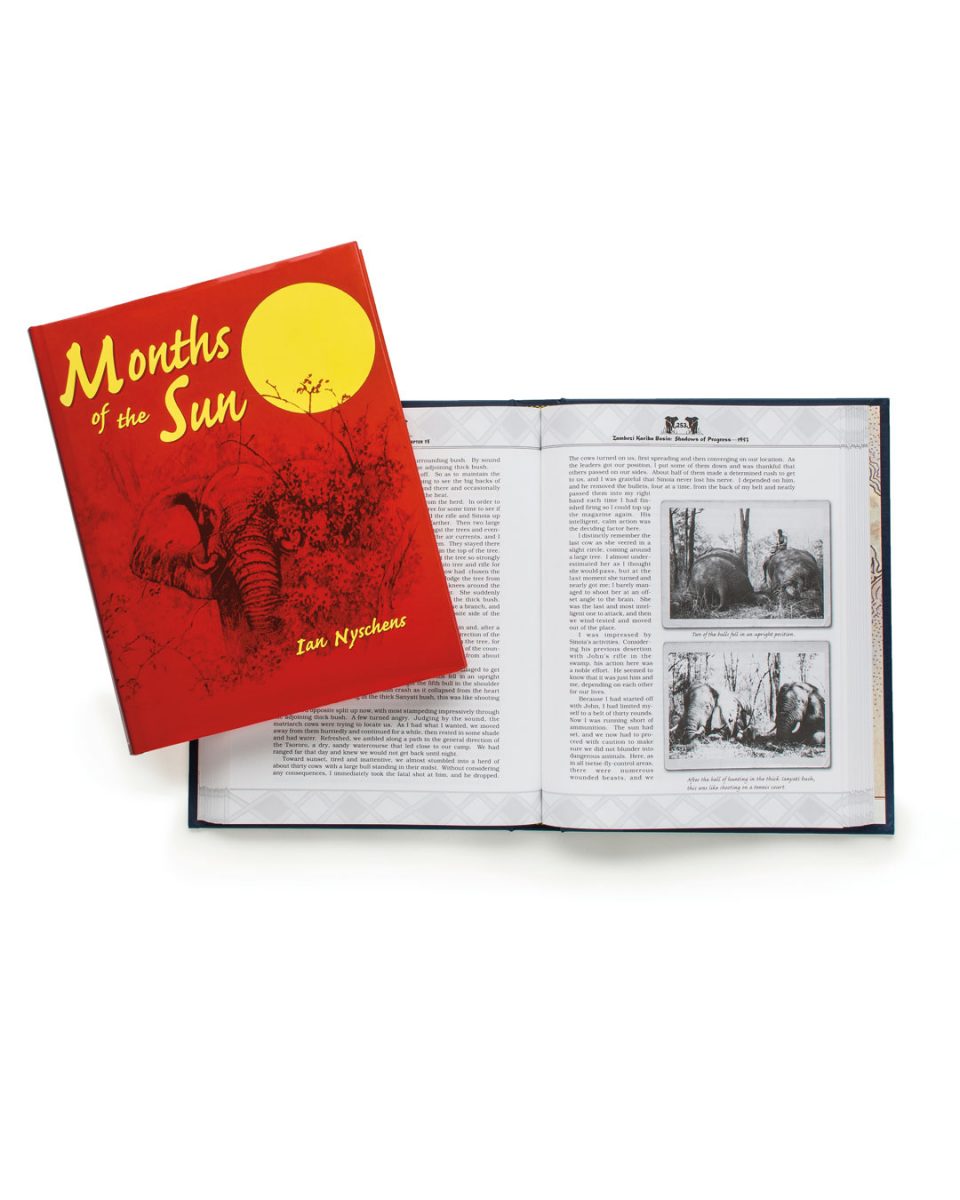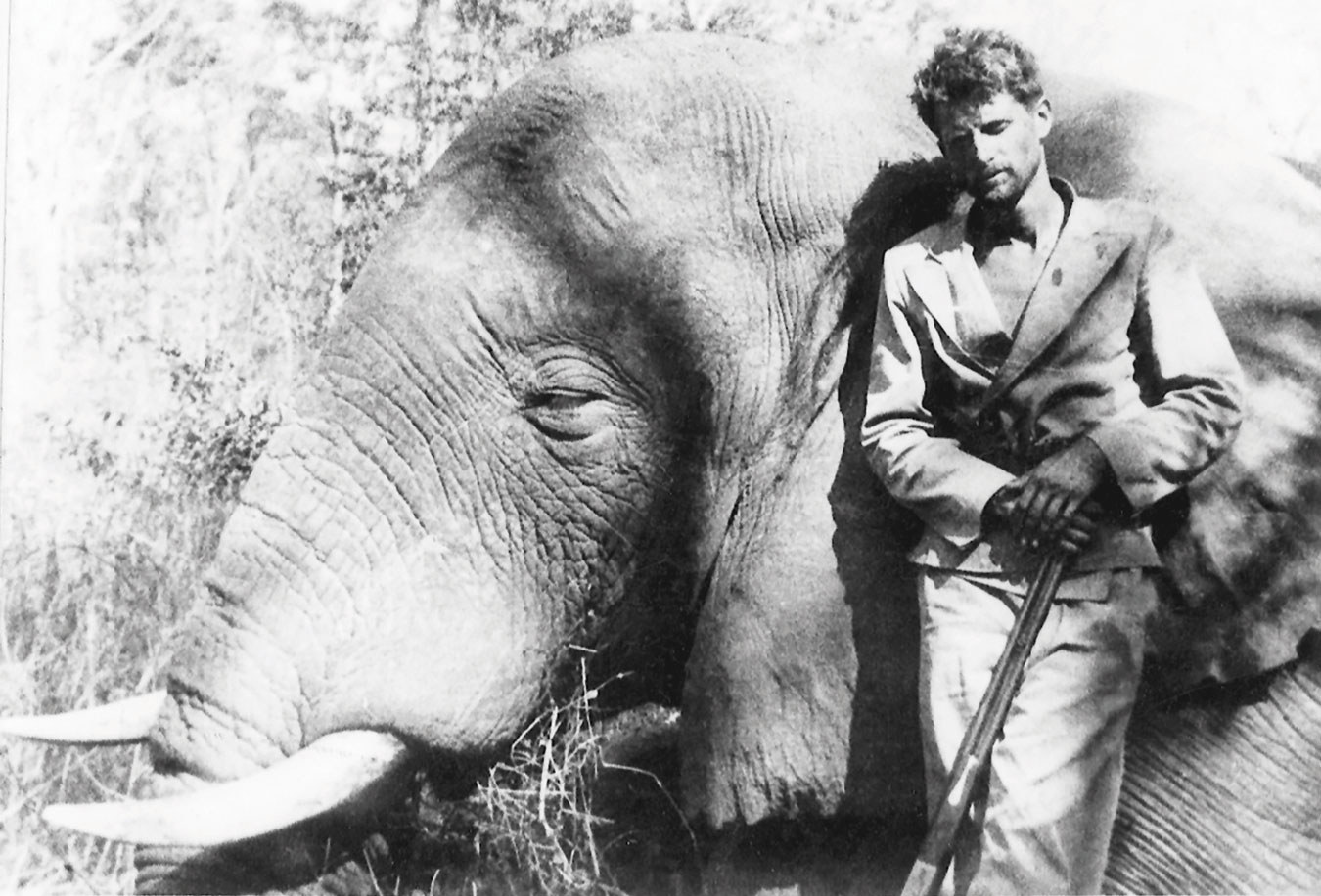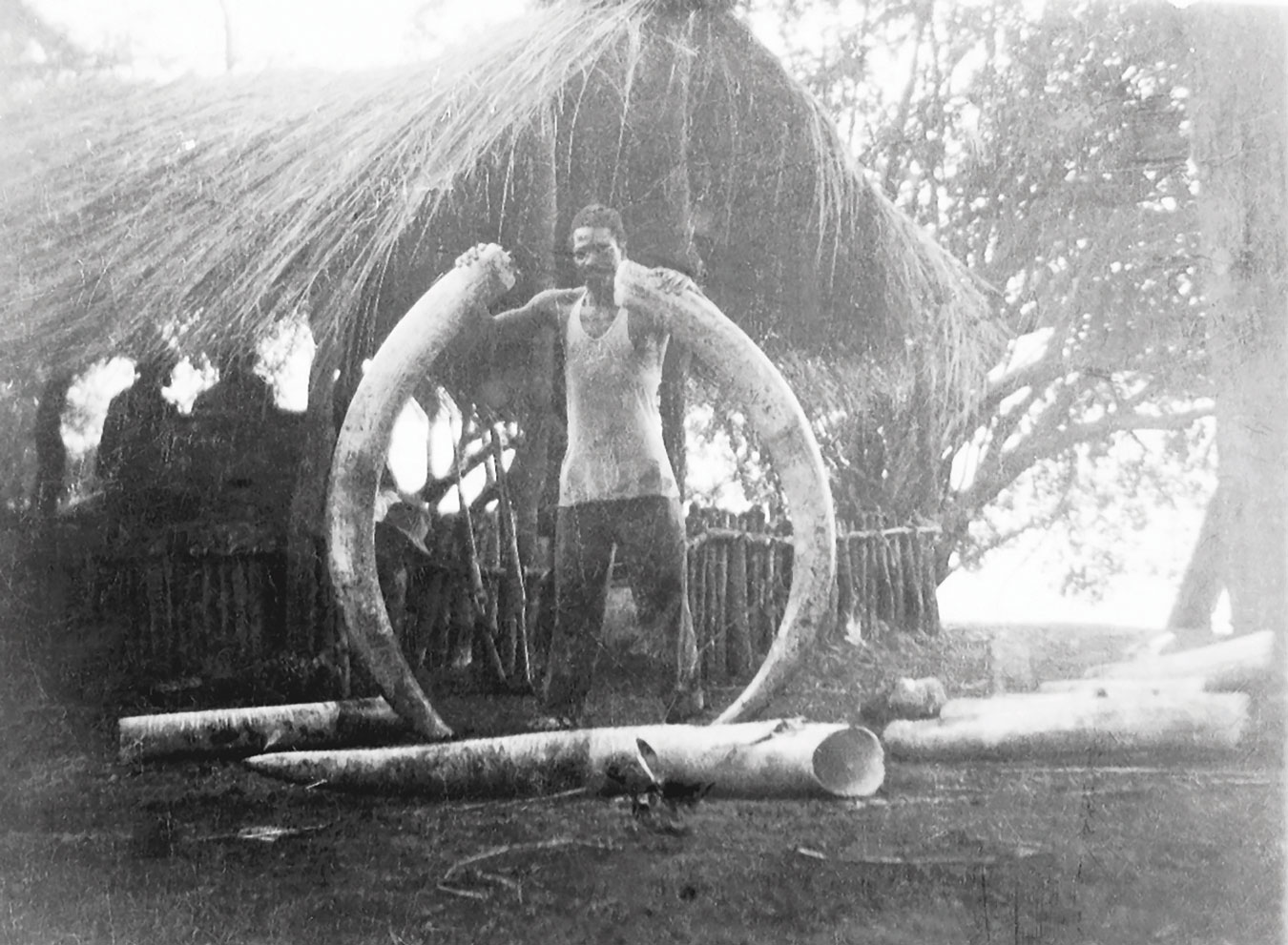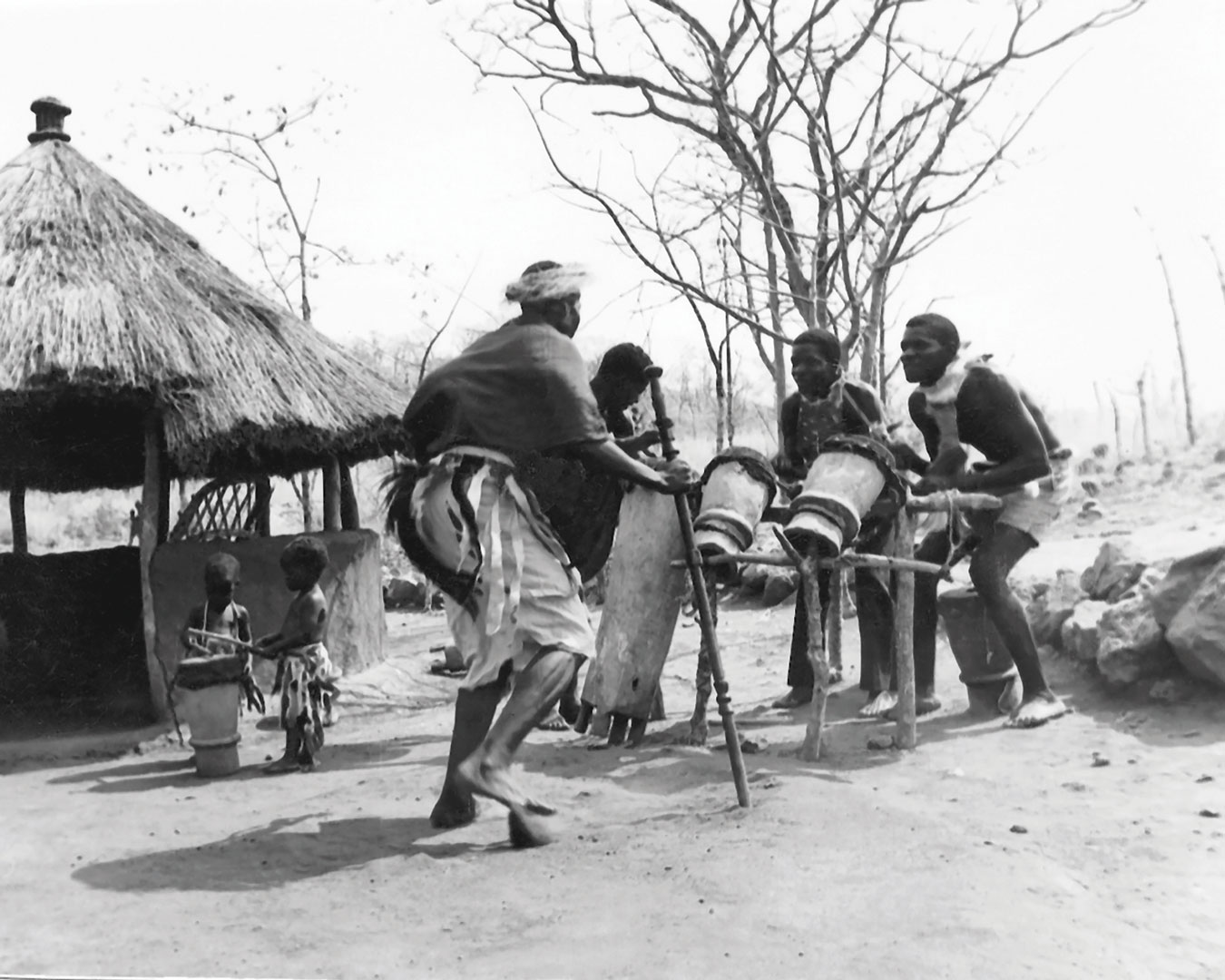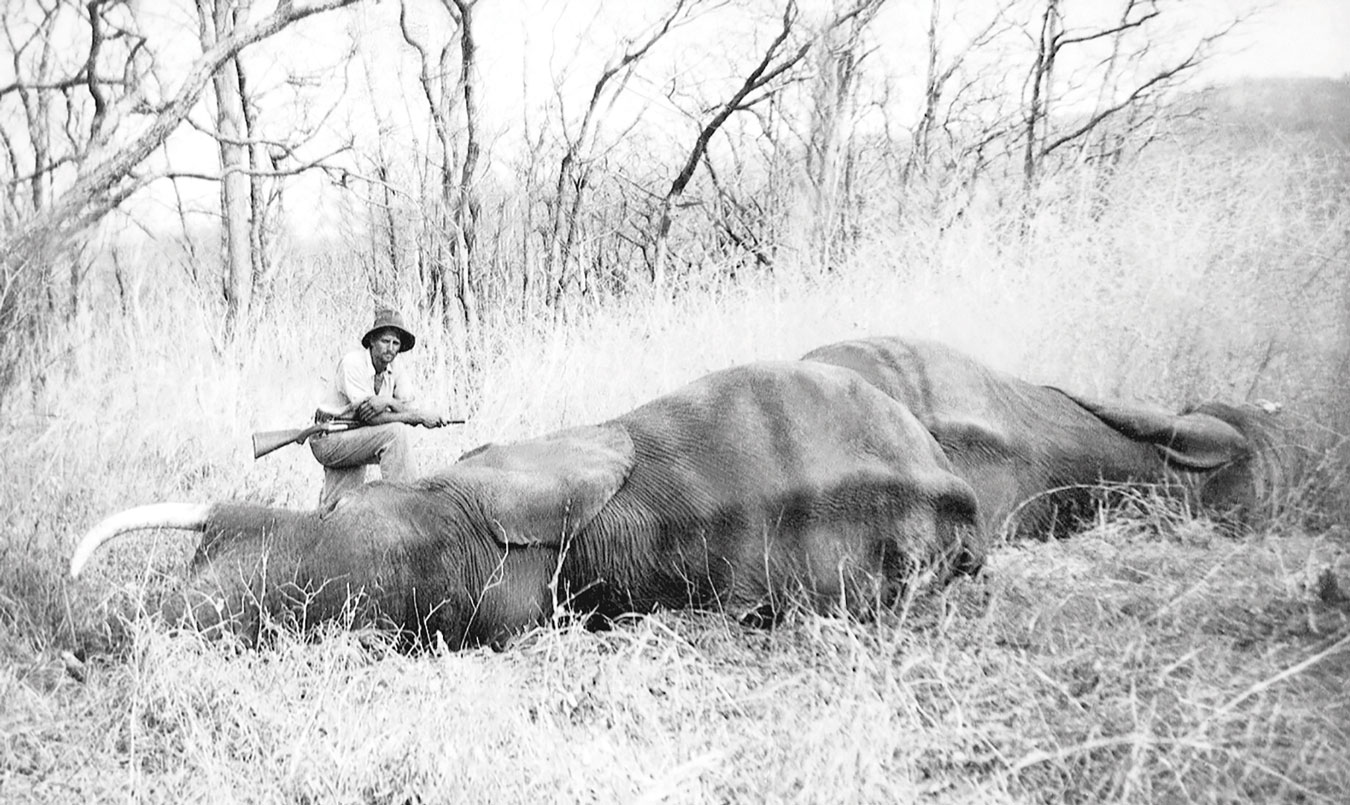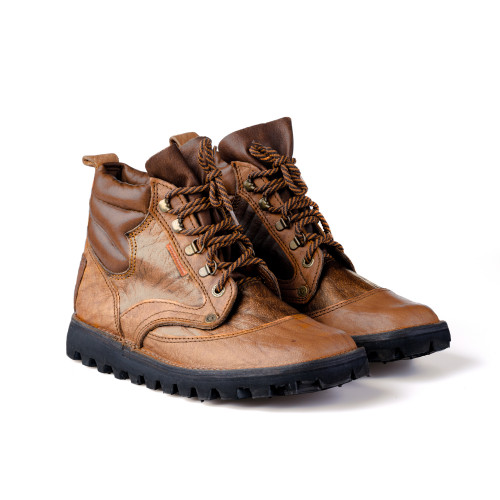My interest in big game hunting was fuelled in the early days by reading the exploits of the legendary hunters such as Selous, Bell, Hunter, Gordon-Cumming and Patterson. Most of these 19th century hunters wrote several books which are available today as originals or reprints. On a par with these men, but whose activities were carried out in the mid 20th century was Ian Nyschens, a Southern Rhodesian, who hunted ivory commercially in Southern Rhodesia, Northern Rhodesia and Mozambique. He mainly hunted elephants between 1947 and 1958, though he was active for forty years, finally retiring to Harare to breed race horses and polo ponies.
He wrote one book, Months of the Sun and, as an account of elephant hunting (both legal and illegal), man-eating lion control and interaction with tribes and trackers, it is the equal of the best of Selous and Bell’s writings.
He started with no money and few prospects, as was the case with the others, but after a short spell of gold prospecting headed for the wilds of the Zambezi Valley. The river formed his main method of travel, often paddling upstream in a dugout canoe for day after day and passing border posts at night so that the authorities of the country he was entering would not know of his arrival.
One of his early exploits involved going up the Zambezi to the Maputo Gorge in Northern Rhodesia (now Zambia) with one black assistant who he had not known for long. Hiding the dugout in reeds at the river’s edge, he and the tracker struck inland and found a large gathering of bull elephant just as a major storm brewed overhead. During the stalk the tracker took fright and disappeared (not to be seen again, though stealing stores from the dugout on his way) but Nyschens pressed on and in torrential rain and lightning, shot twenty seven bull elephants.
Alone, he could not hope to handle the ivory so he left the dead elephant and started back to the Zambezi to get assistance, but, on the way, he encountered a black rhino which charged him and almost broke his leg.
The deserter had stolen all of Ian’s spare ammunition and food from the dugout, and as Ian could hardly walk, he struggled to refloat the dugout. Weeks later and almost starving, he met natives who fed him and he returned to Salisbury. A year later, with a friend and with outboard motors on their dugouts, he returned and found the carcasses, now scattered bones, where he had left them. They carried 52 tusks back to the river, eventually selling them in various different places so that they would not attract attention.
Ian was a wild young man at that stage, but extremely fit and able to exist on the sort of food that the local people had available. He travelled light with only the basic essentials, paramount of which were his rifle, plenty of ammunition and his snake bite kit. He shot his meat and bartered meat for vegetables and fish with the tribes he met along the way. He would make hidden caches of ivory as he moved through the country so that he didn’t waste time returning to civilised areas to market it.
Mostly, the local people liked having him in their area as he provided them with huge quantities of meat, though in one area he was not welcome as it was controlled by a female witch doctor who had convinced her people that she turned into a hyena at night. The hyena woman sent men to assassinate Ian and his tracker on more than one occasion and they were lucky to survive unscathed. Ian decided to take the battle to the enemy, ‘staking out’ her village as the light faded one night. The witch doctor left her hut and put a hyena skin over her back and started howling at the moon, upon which Ian stalked her and, handing his rifle to the tracker and taking his spear, speared her to death, thus terminating the problem.
Mozambique at the time had a very big problem with prides of man-eating lion terrorising the villagers in certain areas and accounting for many deaths. Partly through curiosity and partly because he heard that the Portuguese authorities were willing to give concessions to hunt elephant to people who were prepared to help with the lion problem, Ian spent some months operating in their area. He met a hunter of British origin who the locals called Kamasaro (and to whom Ian does not ascribe an English name) and they spent time together reducing numbers of the man-eaters. While writing about this, Ian meditates on the lives that the local tribes lived, his own thoughts on what he was doing, and the meaning of life. An interesting interlude which demonstrates that though tough and wild, he was intellectually capable.
Through a friend in Harare, I was lucky enough to meet Ian in the late 1990s. I had been warned that he was pretty reclusive and might not be in the mood to talk. He was wearing a faded Ralph Lauren polo shirt, jodhpurs and brown leather riding boots as his hobby after retiring from hunting was raising horses on his small farm in the Harare suburbs. As it turned out, we had a good talk and one of my questions was how he had remembered all the incidents, names and places that he recounts so well in the book. ‘A good memory’, he replied.
There was the possibility of going on a canoe trip on the Zambezi with him and my friend, which unfortunately I never followed up. Having re-read Months of the Sun in order to write this review, I wish I had.
The Explora Blog is the world’s premier online journal for field sports enthusiasts, outdoor adventurers, conservationists and admirers of bespoke gunmaking, fine leather goods and timeless safari clothes. Each month Westley Richards publishes up to 8 blog posts on a range of topics with an avid readership totalling 500,000+ page views per year.
Blog post topics include: Finished custom rifles and bespoke guns leaving the Westley Richards factory; examples of heritage firearms with unique designs and celebrated owners like James Sutherland and Frederick Courtenay Selous; the latest from the company pre-owned guns and rifles collection; interviews with the makers from the gun and leather factory; new season safari wear and country clothing; recent additions to our luxury travel bags and sporting leather goodsrange; time well spent out in the field; latest news in the sporting world; and key international conservation stories.












